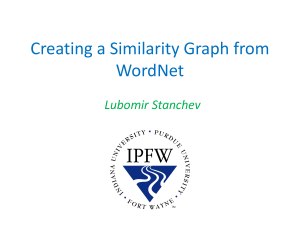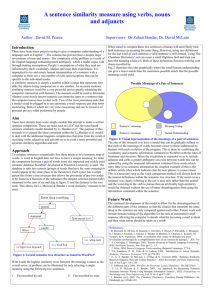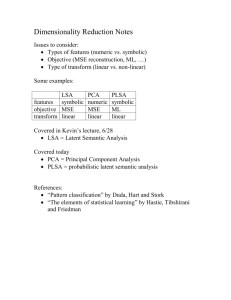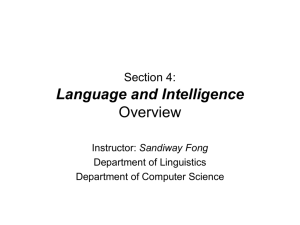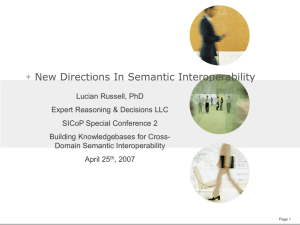Target Word Selection Using WordNet and Data
advertisement
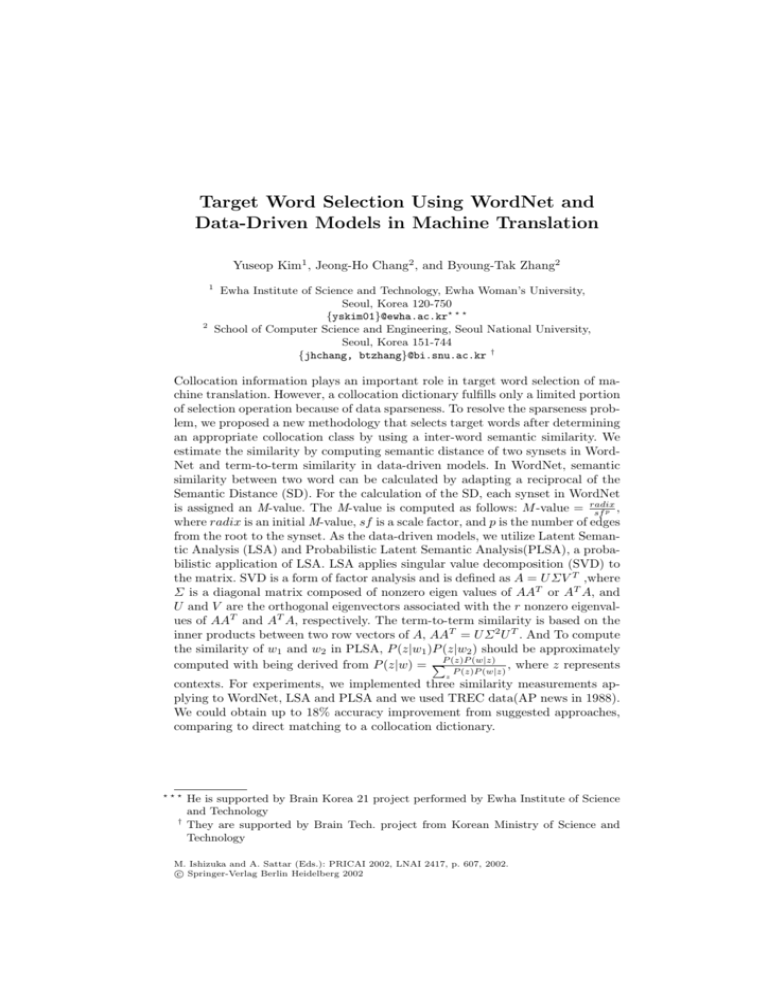
Target Word Selection Using WordNet and
Data-Driven Models in Machine Translation
Yuseop Kim1 , Jeong-Ho Chang2 , and Byoung-Tak Zhang2
1
2
Ewha Institute of Science and Technology, Ewha Woman’s University,
Seoul, Korea 120-750
{yskim01}@ewha.ac.kr School of Computer Science and Engineering, Seoul National University,
Seoul, Korea 151-744
{jhchang, btzhang}@bi.snu.ac.kr †
Collocation information plays an important role in target word selection of machine translation. However, a collocation dictionary fulfills only a limited portion
of selection operation because of data sparseness. To resolve the sparseness problem, we proposed a new methodology that selects target words after determining
an appropriate collocation class by using a inter-word semantic similarity. We
estimate the similarity by computing semantic distance of two synsets in WordNet and term-to-term similarity in data-driven models. In WordNet, semantic
similarity between two word can be calculated by adapting a reciprocal of the
Semantic Distance (SD). For the calculation of the SD, each synset in WordNet
is assigned an M-value. The M-value is computed as follows: M -value = radix
sf p ,
where radix is an initial M-value, sf is a scale factor, and p is the number of edges
from the root to the synset. As the data-driven models, we utilize Latent Semantic Analysis (LSA) and Probabilistic Latent Semantic Analysis(PLSA), a probabilistic application of LSA. LSA applies singular value decomposition (SVD) to
the matrix. SVD is a form of factor analysis and is defined as A = U ΣV T ,where
Σ is a diagonal matrix composed of nonzero eigen values of AAT or AT A, and
U and V are the orthogonal eigenvectors associated with the r nonzero eigenvalues of AAT and AT A, respectively. The term-to-term similarity is based on the
inner products between two row vectors of A, AAT = U Σ 2 U T . And To compute
the similarity of w1 and w2 in PLSA, P (z|w1 )P (z|w2 ) should be approximately
(w|z)
computed with being derived from P (z|w) = P (z)P
, where z represents
P (z)P (w|z)
z
contexts. For experiments, we implemented three similarity measurements applying to WordNet, LSA and PLSA and we used TREC data(AP news in 1988).
We could obtain up to 18% accuracy improvement from suggested approaches,
comparing to direct matching to a collocation dictionary.
†
He is supported by Brain Korea 21 project performed by Ewha Institute of Science
and Technology
They are supported by Brain Tech. project from Korean Ministry of Science and
Technology
M. Ishizuka and A. Sattar (Eds.): PRICAI 2002, LNAI 2417, p. 607, 2002.
c Springer-Verlag Berlin Heidelberg 2002


